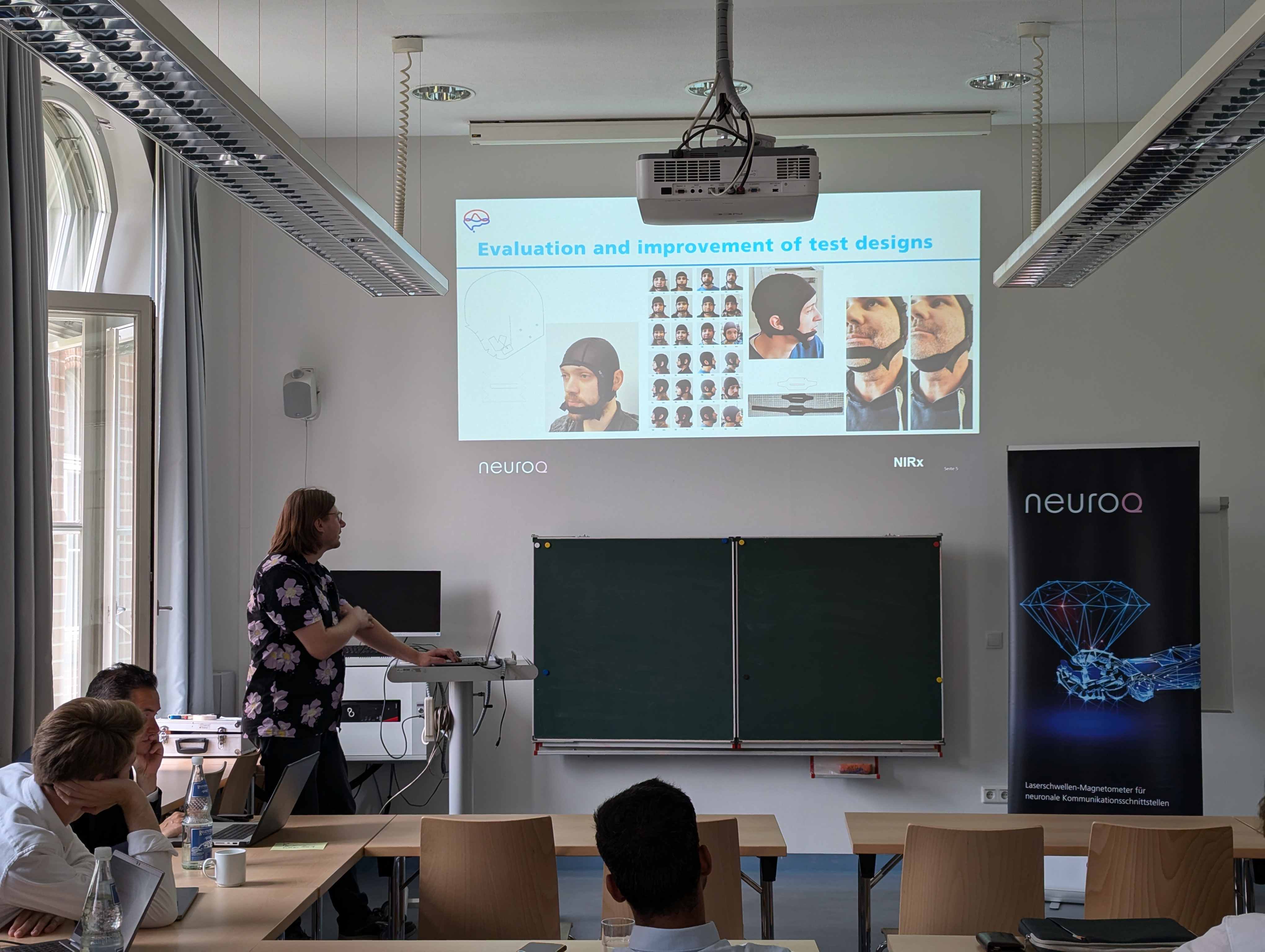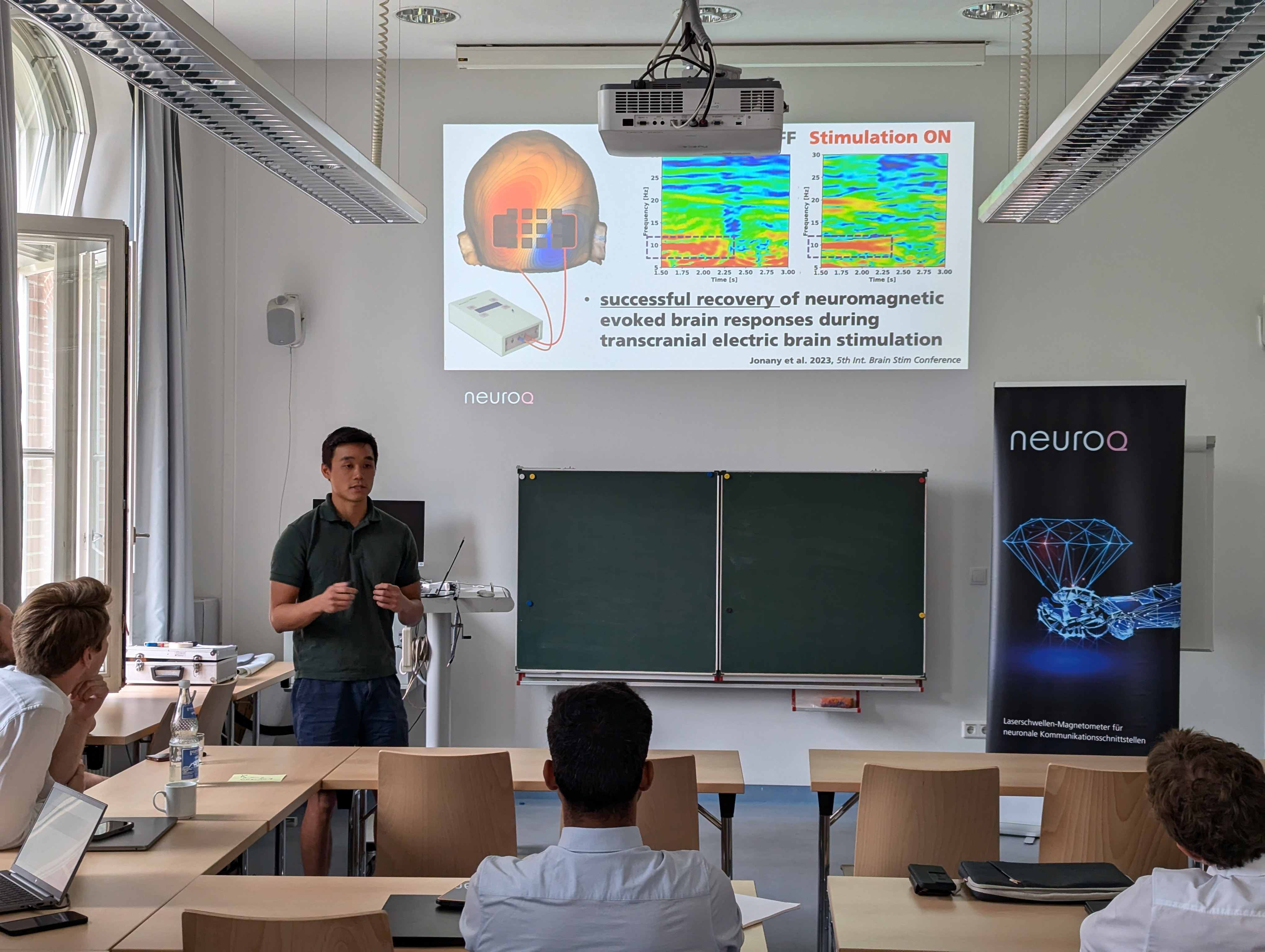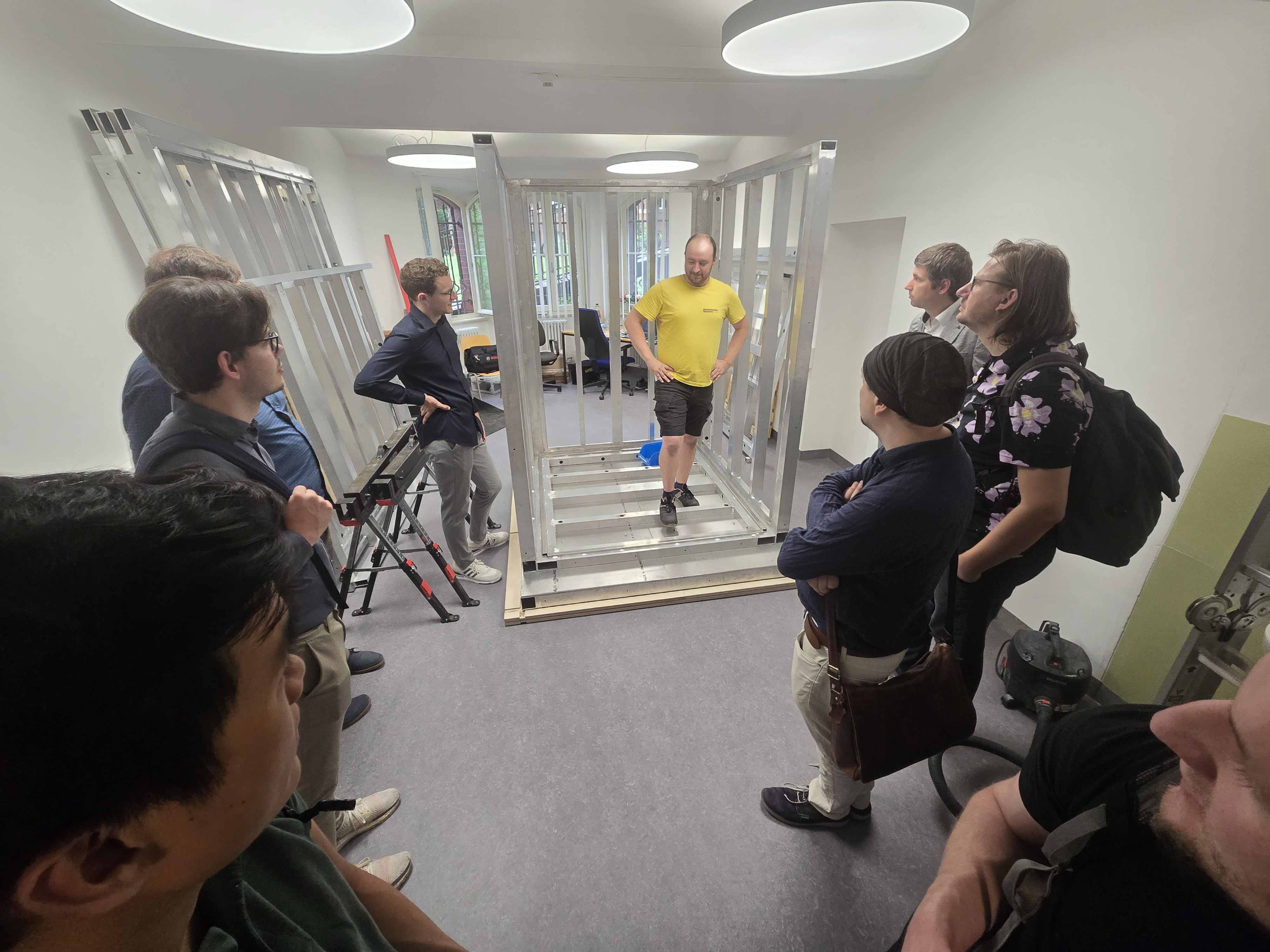In the BMBF lighthouse project NeuroQ, the project partners are developing a brain-computer interface based on diamond-based quantum sensors that enables paralyzed people to control an exoskeleton with their thoughts. At the project meeting at the Charité in Berlin, the researchers presented their results from the first year of the project: They successfully demonstrated the principle of the novel quantum sensor.
The project “Laser threshold magnetometry for neural communication interfaces”, or NeuroQ for short, funded by the Federal Ministry of Education and Research (BMBF), was launched in December 2022. The consortium of nine partners from research and industry has taken on the challenge of developing a technology that enables paralyzed people to control an exoskeleton hand with their thoughts. The required brain-computer interface is based on highly sensitive quantum magnetometers and a completely new approach: laser threshold magnetometry. Diamond and laser are combined in an optical cavity to create a precise measurement system for the weakest magnetic fields.
During the first year of the project, research focused on sensor development. Together with industrial partners Sacher Laser and 21 Semiconductors, researchers at Fraunhofer IAF combined diamond with a second laser medium in a cavity and successfully demonstrated the principle of dual-medium laser threshold magnetometry. In particular, the researchers achieved very good results with the combination of diamond and the special MECSEL laser type (membrane external-cavity surface-emitting laser), thus making significant progress in a key research area of the project. “In the first year of the project, we have not only achieved our milestones, but in some cases, we have also achieved unexpected results that open up new possibilities for our project,” says Dr. Markus Rösch, project manager of NeuroQ.
During the project meeting, the consortium had the opportunity to visit the specially developed shielding environment, which provides ideal conditions for the future patient-oriented use of quantum sensors at the Charité. “The infrastructure created at the Charité is unique in Germany because it allows us to test and further develop the new sensors under clinical conditions, which is a significant step forward for patient-oriented use,” explains Prof. Dr. Surjo Soekadar, Head of the Translation and Neurotechnology Research Department at the Charité – Universitätsmedizin Berlin.
 Fraunhofer Institute for Applied Solid State Physics IAF
Fraunhofer Institute for Applied Solid State Physics IAF


